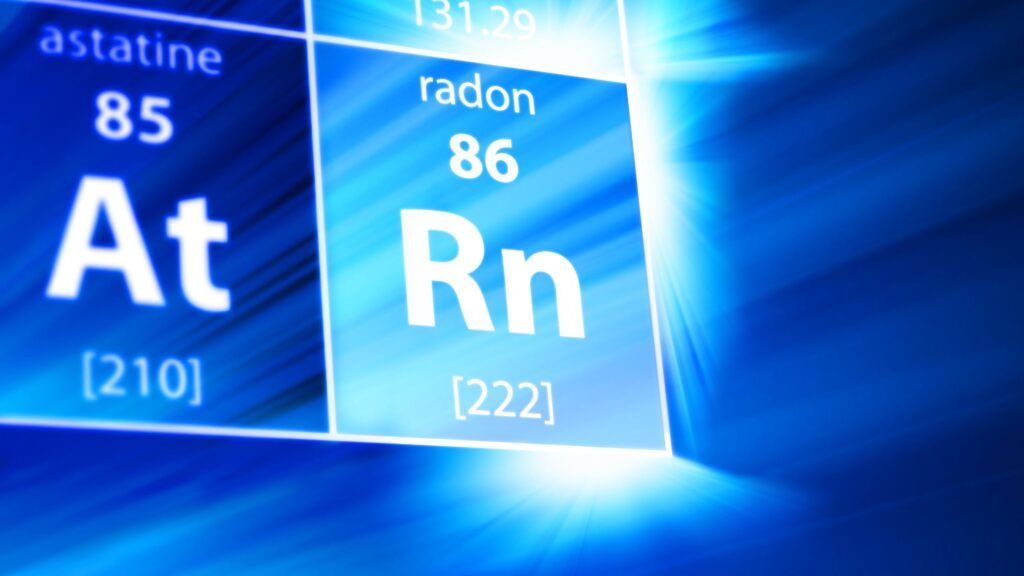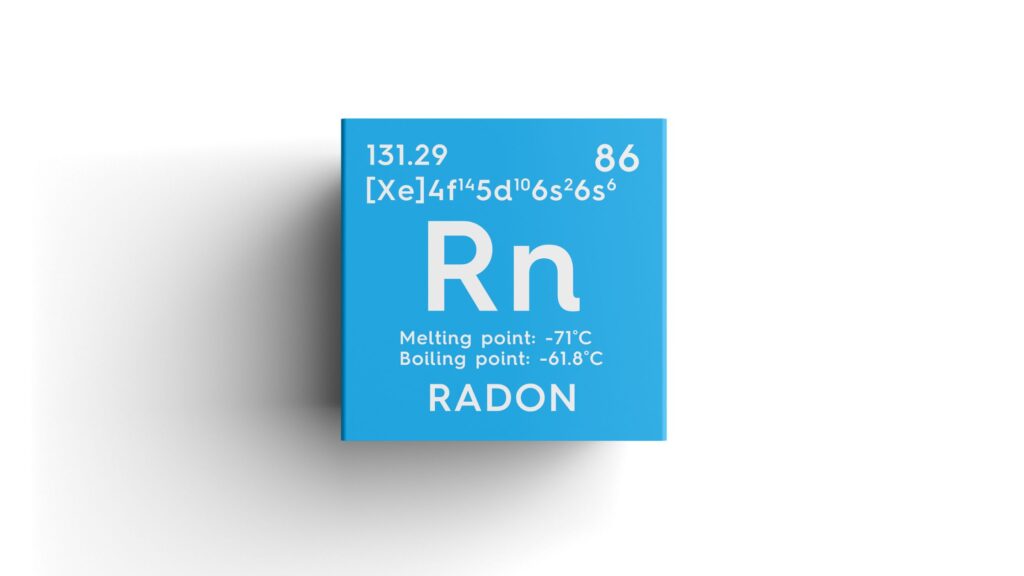Radon is a naturally occurring radioactive gas that forms deep within the Earth’s crust as uranium and other elements decay. Though invisible and odorless, it can easily move through soil and seep into homes through foundation cracks, pipes, and crawl spaces. Understanding where radon comes from and recognizing its long-term impact on indoor air quality are essential steps in protecting your home and your family’s health.

What Exactly Is Radon?
Radon is part of a natural process that takes place underground. As uranium and thorium slowly break down in soil, rock, and water, they release radon gas. This gas rises through the earth and can infiltrate enclosed spaces above it. Because it is both colorless and odorless, you cannot detect it without specialized testing.
Unlike many environmental pollutants that come from human activity, radon originates entirely from the earth itself. Its presence is not limited to a specific region—any location with soil or rock beneath it can release measurable levels of radon.
Where Does Radon Come From?
To understand where radon comes from, imagine it as a silent traveler from the ground. It begins as uranium embedded deep within bedrock and soil. When uranium decays, it produces radium, and as radium further breaks down, radon gas is created. This gas moves freely through pores and cracks in the soil and eventually seeks the path of least resistance upward.
Once near the surface, radon enters buildings through even the smallest openings—foundation joints, sump pump pits, utility penetrations, and floor cracks. Because indoor spaces often have lower air pressure than the surrounding soil, homes naturally draw radon inside. Over time, this gas accumulates, especially in basements and crawl spaces where ventilation is limited. Learn more about What Is Radon?
Major Factors That Influence Indoor Radon Buildup
Modern construction favors tight building envelopes to conserve energy, but that airtight efficiency also traps radon gas once it enters. As a result, concentrations indoors can become several times higher than those found outside. Factors that contribute to indoor buildup include:
A) Soil Composition
Uranium-rich soil and dense clay release higher amounts of radon gas. These types of ground materials allow radioactive decay to occur faster, raising indoor concentration levels.
B) Foundation Type
Basements and crawl spaces create direct contact between soil and living areas. This connection makes it easier for radon to enter and accumulate within enclosed indoor zones.
C) Weather Conditions
Cold or stormy weather increases indoor air suction and pressure differences. These environmental shifts pull more radon from the ground into your home’s lower levels.
D) Ventilation Habits
Limited airflow from tightly sealed windows and doors restricts natural dilution. Without regular ventilation, radon gas accumulates indoors and maintains persistently higher concentration levels.
Even two neighboring houses can show completely different radon levels, which is why every building should be tested individually.

The Health Impact of Radon Exposure
Knowing where radon comes from is only the first step—understanding its health implications is equally vital. When radon gas is inhaled, it decays into radioactive particles that can attach to lung tissue. Over time, these particles damage cells and increase the risk of lung cancer.
Health experts consider radon exposure the second leading cause of lung cancer after smoking. Continuous exposure to high radon levels over many years poses a serious risk, particularly for people who spend long hours indoors. Unlike short-term pollutants, radon’s effects build gradually, making consistent monitoring and mitigation crucial.
How to Detect and Control Radon Levels
Testing remains the only reliable way to know if your home contains elevated radon levels. Simple test kits can provide an initial reading, but professional testing ensures accuracy and peace of mind.
Once detected, mitigation systems can reduce radon effectively. Common methods include:
- Sub-slab depressurization: A vent pipe and fan system draws radon gas from beneath the foundation and releases it safely outdoors.
- Sealing entry points: Cracks and openings in floors, walls, and utility joints are sealed to minimize entry routes.
- Crawl space ventilation: Increasing air exchange in crawl spaces helps dilute radon before it reaches living areas.
- Ongoing monitoring: Regular retesting confirms that mitigation systems continue to perform effectively.
Addressing radon at its entry point offers the most lasting solution, ensuring your home remains a healthy environment year after year.
Why Professional Help Makes the Difference
While DIY testing is helpful, professional mitigation services ensure lasting results. Experts analyze soil conditions, home layout, and airflow patterns before designing a system that fits your property. They use specialized equipment to measure, seal, and redirect radon safely away from living areas.
In addition, professional systems include performance verification and follow-up testing to guarantee compliance with recommended safety standards. This professional approach provides more than immediate results—it delivers long-term assurance that your home’s air remains safe for your family.
Conclusion
This gas is a natural byproduct of the earth, born from the decay of uranium deep underground. Although invisible, it poses a very real health threat when it accumulates indoors. Understanding where radon comes from, testing regularly, and taking action through professional mitigation can significantly reduce your risk.
For trusted expertise and effective solutions, rely on DSM Radon—your partner in protecting homes, ensuring clean air, and promoting healthier living environments.

FAQs
1. What is the primary source of radon gas?
Radon originates from the natural radioactive decay of uranium found in soil, rock, and groundwater beneath the earth’s surface.
2. How does radon enter my home?
Radon seeps into homes through foundation cracks, floor joints, wall gaps, and openings around pipes or drains that connect to the soil.
3. Can radon be eliminated?
While radon cannot be entirely removed from the environment, mitigation systems can reduce indoor concentrations to safe and manageable levels.
4. How often should I test my home for radon?
Testing every two years—or after major renovations or foundation work—is recommended to ensure that radon levels remain within safe limits.





